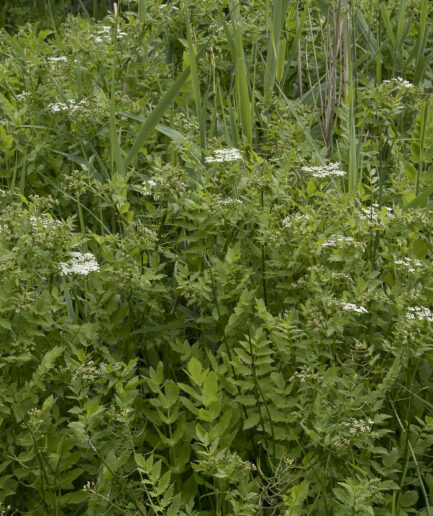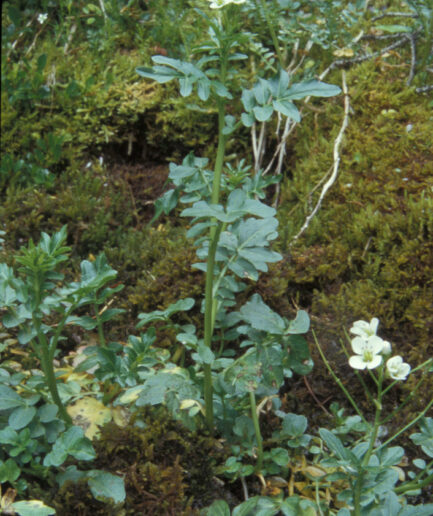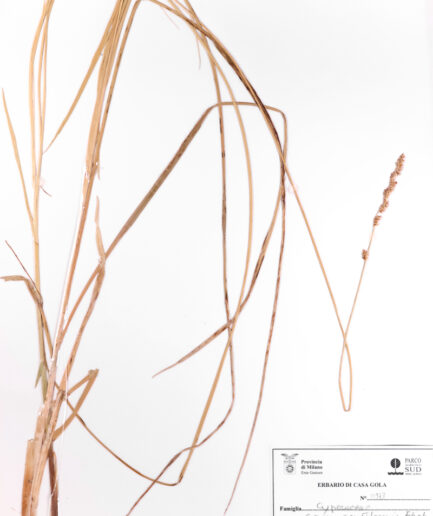Field Horsetail
Scientific Name: Equisetum arvense L.
Family: Equisetaceae
MORPHOLOGY
Habit and Size: Perennial fern with a blackish, long creeping and jointed rhizome, tuberiferous.
Stem: Early fertile stems, short-lived, 10-20(30) cm tall and 0.5 cm in diameter, reddish-brown or whitish, lacking chlorophyll, simple; broad sheaths at the base of each internode, somewhat flared, almost funnel-shaped, with 8-12 large lanceolate-acuminate dark brown teeth. Terminal strobilus (or spike), pedunculate, ovate-oblong, blunt-tipped, up to 4 cm long, formed by sporophylls to which the sporangia are attached in the form of small shields, where spores develop. After spore production, the fertile stems wither and die. Sterile stems are highly polymorphic, non-overwintering, green, erect-spreading, emerging after fertile stems, up to 50(60) cm tall, rough, silicified on the ribs (not very numerous, deeply separated) and with a central cavity measuring 1/4 of the diameter. Verticils with erect-spreading jointed branches, with a triangular or more frequently quadrangular section, rarely provided with branchlets, the upper ones shorter, often irregular, and the first segment longer than the sheaths; sheaths smaller than those of the fertile stems, somewhat dilated at the top, with acute teeth, dark apex, and narrow cartilaginous margin.
Leaves: They do not have leaves.
Flowers: They do not have flowers.
Fruits and Seeds: Spherical spores produced between February and May.
DISTRIBUTION AND HABITAT
It grows throughout Italy in moist and sandy uncultivated areas, on riverbanks, in ditches, in cultivated fields, on roadsides, in marshes, on riverbeds, along railways from 0 to 2,000 m and even up to 2,500.
USE
The presence of silica makes E. arvense (E. telmateia and other congeners have approximately the same properties) one of the most valid remineralizing plants. Silicic acid appears to have properties to increase tissue elasticity and aid in skeletal reconstruction, which could accelerate, for example, fracture healing. It also has a strong diuretic action, hemostatic, astringent, and purifying properties. For external use, it has resolving, cleansing, and antiseptic properties and was often used in folk medicine for hemorrhoidal disorders, nosebleeds, varicose veins, itching, and inflammations of the mouth and throat mucous membranes. Modern phyto-cosmetics also use this plant for nutrient and firming preparations for dry and aging skin, as well as for cleansing and revitalizing preparations for boil-prone skin. Before taking any plant-based product (medicinal or non-medicinal) for therapeutic or similar purposes, it is always advisable to consult your doctor. In cuisine, the very young shoots of the fertile stems are used before they harden with growth, and are consumed raw in salads or boiled or prepared in various other ways (frying, gratins, meatballs).
Photo: Provided under a free license by Saxifraga and Ed Stikvoort, Piet Zomerdijk, Rutger Barendse.





















